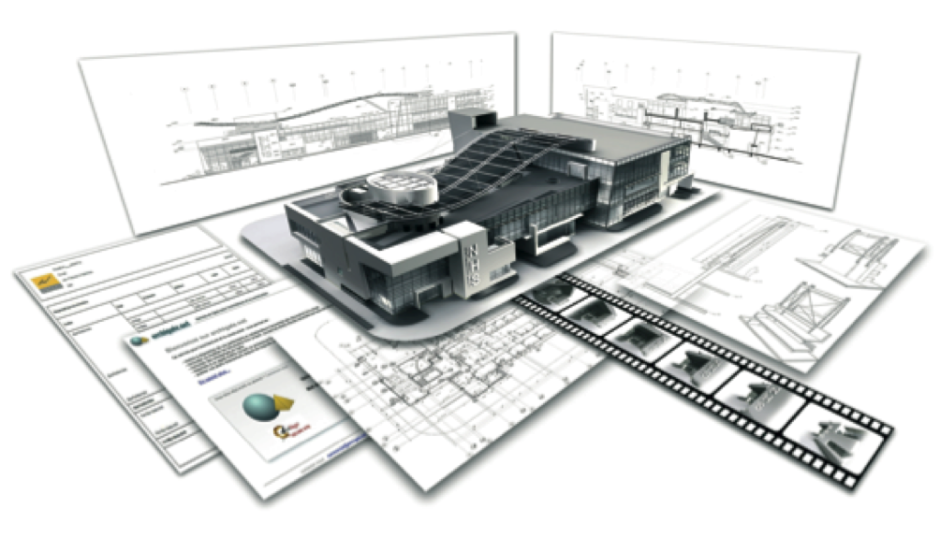What do I need to keep in mind when selecting my BIM tool?
Although there are several model-based design solutions available on the market today, it is important to note that not all solutions can equally fulfill the requirements for being a true BIM solution. The following set of questions help you judge if a certain solution has all the characteristics that set cutting edge BIM solutions apart from the rest of the pack:
- What is the “depth” of the BIM model supported?
Optimally, the BIM model should be able to serve all deliverables during the entire building project lifecycle. There are various levels and depths to creating 3D building models starting from mass models used for schematic design through 3D models created for visualization purposes to intelligent “real” building information models. While models created for visualization only contain not more than the 3D geometry and material descriptions necessary for the realistic presentation of the building, real BIM models, in addition to the geometry, also contain an abundance of additional information necessary to coordinate, document, list and manage the building based upon its intelligent BIM model. - Does the BIM solution cover the complete workflow?
As noted above, “real” BIM models should incorporate all information necessary to create the deliverables during the building projects’ lifecycle. This also means that the BIM authoring tool should cover the complete BIM workflow without the need for changing tools and/or workflows in the middle of the project. Hence it is a vital question whether the design, documentation, realization and operation of the building is supported by the BIM tool beginning with conceptual design through design development, construction documentation to construction administration & management and ultimately facility management. - At what level does the BIM solution support interoperability?
In addition to being compatible with the world at the binary level (file compatibility) BIM tools also need to be compatible with one another at the process or workflow level. This is especially true in the event of interdisciplinary design teams that need to collaborate on the different design aspects of the same building. When selecting your BIM tool it is mission critical whether your BIM tool supports open standards and open workflows that enable coordination with consultants — regardless of the type or version of their selected design application (BIM tool). To learn more about “openBIM” design workflows please visit www.graphisoft.com/openbim? - Does the BIM solution support real-time model-based collaboration?
Building design is a team process in most cases. So should be BIM as well. This is, however, not a given, as BIM models are much more tightly integrated than traditional CAD drawing-based projects. Sharing design in BIM requires a whole new approach that involves active BIM servers that offer parallel, “real-time” access for an entire team. When selecting your BIM tool it is a question of strategic importance whether the BIM model and the process to creating it are designed in a way that supports real-time sharing for teams and projects of any size. To learn more about model based design sharing with the cutting-edge GRAPHISOFT BIM Server visit www.graphisoft.com/bimserver. - Does the BIM solution sufficient performance for large/complex projects?
As noted above, the BIM model is much more tightly integrated and includes much more data than traditional CAD drawings. This necessarily implies that project-size growth has an exponential relation with the performance requirements. Whether a BIM solution can handle that growth depends on various factors including its ability to utilize latest hardware enhancements and the way it handles the model. When selecting your BIM tool it is an absolutely valid question what the maximum possible project size is allowed/recommended and whether advanced IT technologies such as 64-bit and multiprocessing technologies are supported at the same time throughout the entire application. - Does the BIM solution support local standards and offer sufficient local content?
Building projects are not only unique design pieces but the way they are designed varies between countries. Global BIM solution providers handle the issue of “localization” at different levels. Language translation is really not localization – it is only what its name suggests. When selecting your BIM tool it is your primary interest to be fully aware whether a BIM solution follows local design standards and has rich local content including intelligent building objects, local project and listing templates, and attribute sets following local standards.
Source: About BIM



